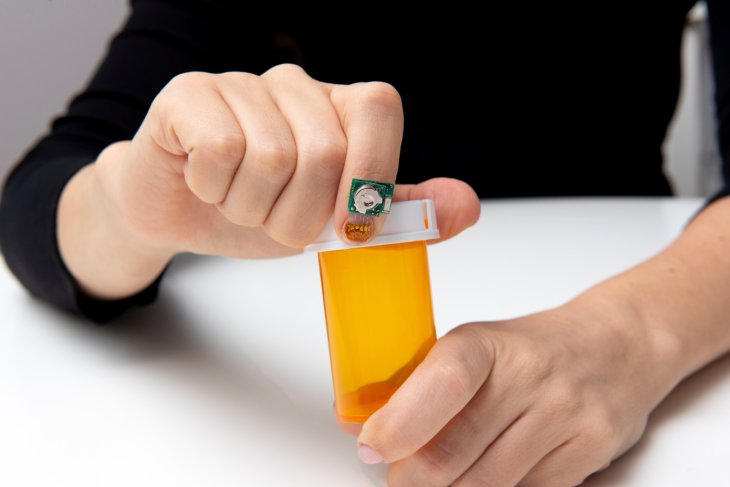Smallest Parkinson Sensor Tracking Device Attached On Nails
Indira Datta - Jan 01, 2019

IBM has developed a tiny sensor that can be attached to your fingernail and helps detect Parkinson symptoms..
- IBM And Fujifilm Team Up To Create Magnetic Tape With World-Record 580TB Storage
- Samsung To Create Ultra-High-Resolution 600MP Camera Sensors
- IBM Is Developing An AI Suitcase Robot To Guide The Visually Impaired
People often wonder if the medicine they use actually works and reduces their disease. IBM has announced that it has produced a small sensor that can help with monitoring how effective medications are, particularly those taken to fight Parkinson's symptoms and other illnesses.
This device will be mounted on the nail and measure curvature when users hold anything. It comes with software used to analyze collected data and notify users.

It is tiny and does not affect your work
Specifically, researchers use this sensor to collect the movement of muscles and nerves from which to show the health status of the owner. Typically, people will use sensors on the skin to get results more efficiently, but the team thinks that the skin can get infections and many other problems. Therefore, they choose fingernails as a place for this device to contact and collect data.
According to researchers, our fingernails are deformed in a stereotype every time we grasp something. It can also bend and even extend your fingers; however, these distortions are minimal, and we cannot see with the naked eye. For sensors, the identification of these fluctuations is not difficult because it operates in single digit microns order. A typical human hair is around 50 to 100 microns long, while every blood cell is smaller than 10 microns.
Currently, the researcher's prototype device is mounted to the nail with glue. Since the nails are quite hard, there are fewer risks than skin sensors. Sensors can identify user movements such as opening the door or grasping a screwdriver. The device includes models and data to track the writing process by the user's finger. Next, the sensor communicates with a smartwatch which operates machine learning models for the detection of tremors as well as Parkinson's symptoms.
The research team hopes to be able to develop this device more, allowing it to diagnose other diseases. However, there is no information on whether this device will be available on the market.
Featured Stories

Features - Jul 01, 2025
What Are The Fastest Passenger Vehicles Ever Created?

Features - Jun 25, 2025
Japan Hydrogen Breakthrough: Scientists Crack the Clean Energy Code with...

ICT News - Jun 25, 2025
AI Intimidation Tactics: CEOs Turn Flawed Technology Into Employee Fear Machine

Review - Jun 25, 2025
Windows 11 Problems: Is Microsoft's "Best" OS Actually Getting Worse?

Features - Jun 22, 2025
Telegram Founder Pavel Durov Plans to Split $14 Billion Fortune Among 106 Children

ICT News - Jun 22, 2025
Neuralink Telepathy Chip Enables Quadriplegic Rob Greiner to Control Games with...

Features - Jun 21, 2025
This Over $100 Bottle Has Nothing But Fresh Air Inside

Features - Jun 18, 2025
Best Mobile VPN Apps for Gaming 2025: Complete Guide

Features - Jun 18, 2025
A Math Formula Tells Us How Long Everything Will Live

Features - Jun 16, 2025
Comments
Sort by Newest | Popular